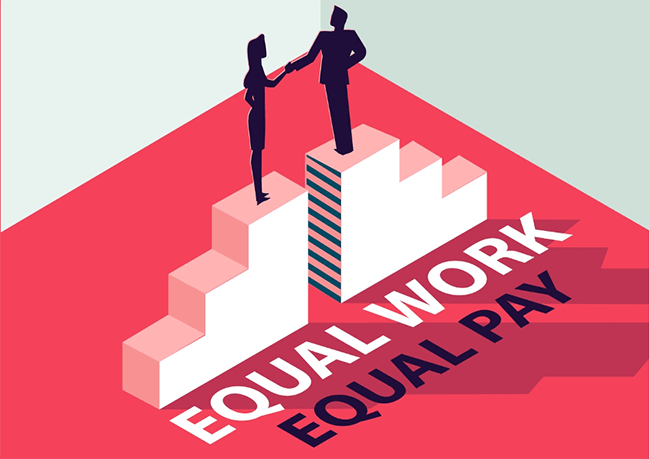
Gender Equity before Gender Equality – Why Women Need More
What is Gender Equity?
In one of our earlier posts, Implementing Gender Equality at the Workplace, we briefly spoke about the concept of equity, and how gender equity is a precursor to gender equality. In this post we explore the concept of equity in a deeper sense. It is not enough for women to have equal rights. Equality does not put them at the same footing with men. Without really understanding the concept of equity, equality will remain a distant dream. To achieve gender equality, women need more – they need equity.
To address gender discrimination, we first need to acknowledge the deep-rooted history of gender inequality and discrimination world over. In doing so, we realize that women have been deliberately subjected to a backward footing, as compared to men. Hence, more than equality, they need equity. But what is the difference between equality, and equity? Here is a common yet effective anecdote that brings out the difference beautifully –
Imagine that you are at a baseball game and have to look over a fence in order to see the game. There are also several others who are in the same situation as you are. The fence is quite high so everyone needs a stepping stool of some sort to see over the fence. In equality, everyone would get the same sized stepping stool. Thus, one can immediately see a glaring problem! Not everyone is the same height. This is where equity steps in. In being equitable, everyone would get different sized stepping stools so that they could all see over the fence. Everyone would get a chance to view the game.
Positive Discrimination to bring about Gender Equity
One of the ways we can bring about gender equity, is through what has been termed positive discrimination,i.e., the practice of favoring individuals who have suffered historical discrimination. Policies at the work place are one of the most effective instruments of bringing about equity. An effective way to practice positive discrimination to ensure equity for women, is by looking into and analyzing the existing workplace policies.
One way to do this, is to ask questions. Questions are always a great way to begin constructive and meaningful dialogue.
- Does your organisation promote work from home for women?
- How inclusive is your organisation when it comes to recruiting women staff who have been on a career break?
- How fair do you think the over all recruitment policy of your organisation is? Are they transparent about their reasons for rejecting one candidate over another? Are women asked questions like, “are you going to start a family any time soon?”, during the interview process?
- How high is the glass ceiling in your organization?
- How stringent are the sexual harassment policies of your organisation?
- Does your work place have a POSH (Prevention of Sexual Harassment) committee?
- How about the much debated, and controversial maternity rules – what is your organization’s stand on them?
To understand what a manifestation of gender equity would look like, let us have a look at companies who are leading by example –
Fortune.com has come out with their list of 100 best workplaces for women, and these are the five companies on the top of the list:
- Texas Health Resources
- Ultimate Software
- Edward Jones
- Marriott International
- Pinnacle Financial Partners
They explain in their methodology of curating this list that factors such as flexibility, paid leave and no harassment are only the basic factors that lend these companies the title of being ‘the best’ work places for women. What are the other factors?
- Healthy work-life balance
- Transparency
- Environment of Inclusion
We don’t need to look to as far as the USA for good practices when it comes to gender equity in the workplace. Some companies in India are leading by example of being the best work spaces for women, some of which are -Accenture, Cummins India, Deloitte in India, Hindustan Unilever Limited, IBM India, ICICI Bank, Intel Technology India and Mindtree.
Above everything else, the presence or absence of gender equity at your workplace is about the larger culture of the organisation in question. The foundation, and the culture of an organisation is what influences all other factors. At its inception, an organisation or a corporate entity makes a few choices about being fair, or unfair, inclusive or exclusive, supportive and nurturing or extorting. These choices are reflected in the recruitment and human resource policies, and in the larger culture and environment of the organisation.
How would you score your organisation in terms of gender equity? Need ideas for organizing work shops to bring about awareness regarding gender equity at your work place? Write to us and we will be happy to help!

